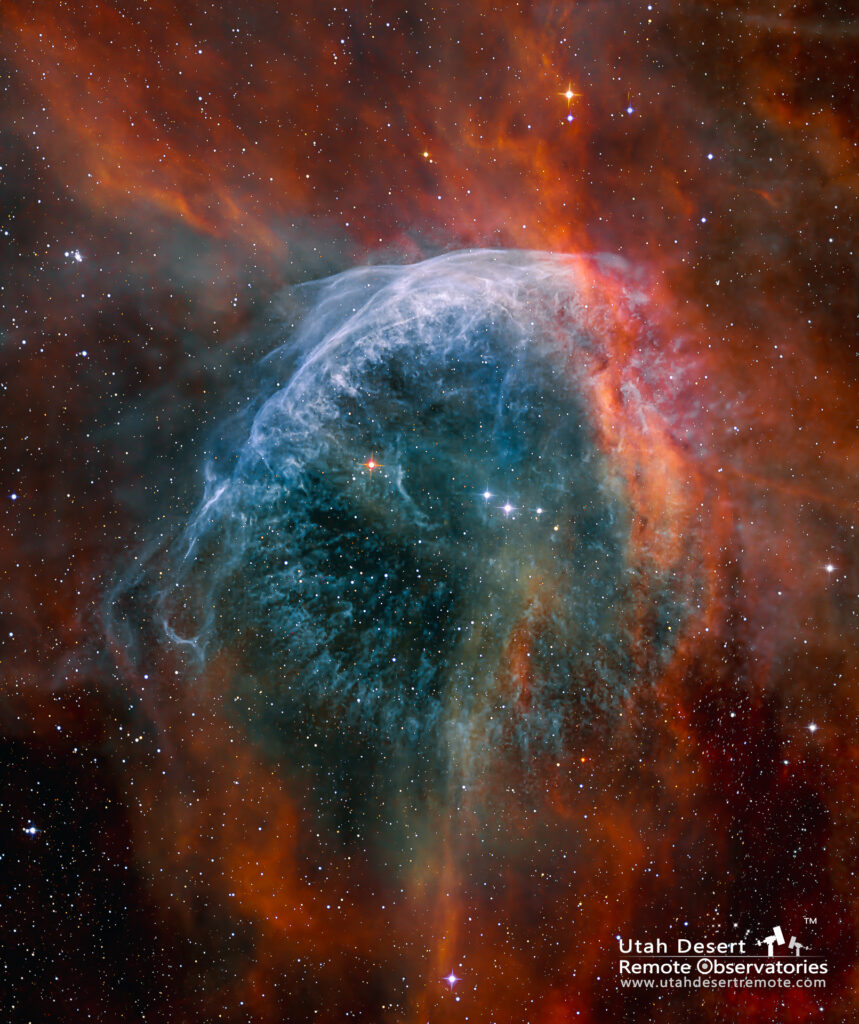By Jett Peters

Among stars, mind boggling characteristics of scale and intensity are the norm not the exception, so the idea of standout stars might seem like an oxymoron. There is one class of stars, however, Wolf-Rayet (WR) stars that could be referred to as “extreme stars.” Not only are WR stars fascinating for their evolutionary path, they create some of the best known nebulae and appealing targets for astrophotographers. They are massive even by stellar standards, have incredibly intense stellar winds and are some of the most luminous stars in the cosmos. Of the 2 billion stars cataloged in the Milky Way, only a tiny fraction, 600, are classified as Wolf-Rayet stars.
WR stars are a very short-lived stage in some super-massive star’s lives, which explains in part why they are so rare. While massive stars that evolve into WR stars live for a few million years, the WR phase is only a few hundred thousand years, a speck on a cosmic time scale. To put the length of this stage in context, a star like our Sun will spend tens of billions of years in the main sequence phase.
WR stars are typically born with masses ranging from 20 to 60 times the mass of our sun, but they shed a significant portion of their mass by the time they reach the WR phase. In addition, they have immense surface temperatures, reaching levels between 30,000 K and 200,000 K, which is far hotter than the Sun’s modest 6,000 K. WR stars’ luminosities dwarf the vast majority of stars. Depending on the subtype, a Wolf–Rayet could be hundreds of thousands to over a million times more luminous than the Sun.
Wolf–Rayet stars come in three main spectral types: WN (nitrogen-rich), WC (carbon-rich), and the rare WO (oxygen-rich). These classifications reflect the elements exposed in their outer layers after stellar wind has stripped away hydrogen and even helium, essentially exposing the core of the original star. These powerful stellar winds are one of the most intriguing features of WR stars. Stellar wind is essentially a stream of ionized particles thrown off by a star at extreme velocities. WR stars have stellar winds radiating out at up to 3000 km/s. The Sun’s solar wind, in comparison, only clocks in at around 800 km/s.
The stellar winds shape the nebula around stars, and since the stellar wind of WR stars are so intense, the nebula surrounding WR stars have a very distinct and striking structure, often resembling huge striated spheres. Wolf–Rayet stars have ejected large amounts of hydrogen, helium and other gasses earlier in their evolution: gases the extreme stellar wind forms into a characteristic shape. In fact, some of the most popular nebulae were shaped by the intense winds of WR stars. WR 134 is a well known example that can be seen in the image below. Other examples include the Crescent Nebula and Thor’s Helmet which are thought to be sculpted by the stellar winds of WR 136 and WR 7, respectively.
Even the end of their lives is extreme as many WR stars will explode as core-collapse supernovae, some of which may even produce gamma-ray bursts, one of the most energetic events in the universe.
